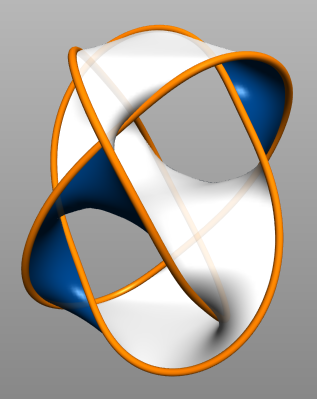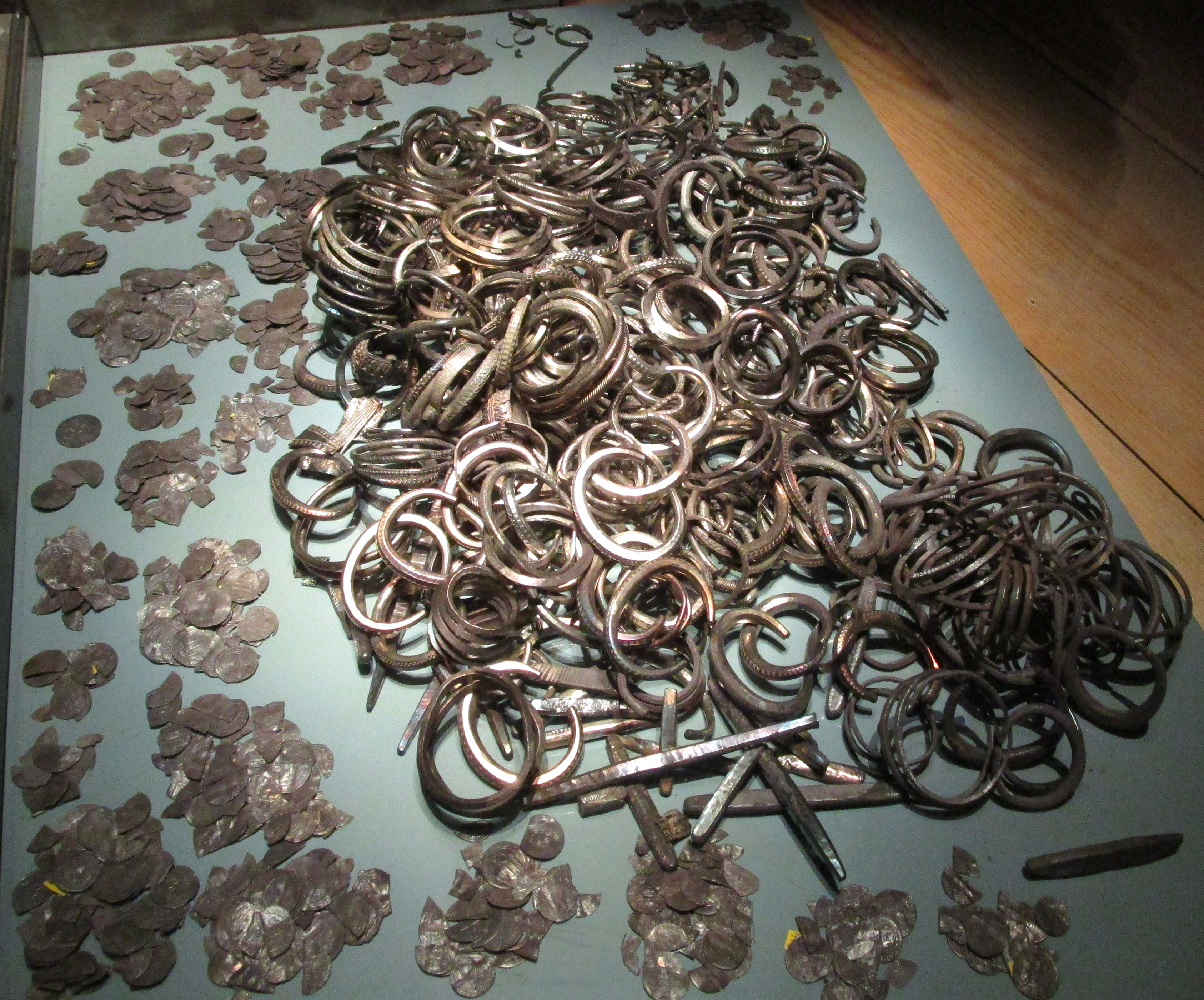|
Valknut
The valknut is a symbol consisting of three interlocked triangles forming subliminal triskelion at its center. It appears on a variety of objects from the archaeological record of the ancient Germanic peoples. The term ''valknut'' is a modern development; it is not known what term or terms were used to refer to the symbol historically. Scholars have proposed a variety of explanations for the symbol, sometimes associating it with the god Odin, and it has been compared to the three-horned symbol found on the 9th-century Snoldelev Stone, to which it may be related.Simek (2007:163). Archaeological record The valknut appears on a wide variety of objects found in areas inhabited by the Germanic peoples. The symbol is prominently featured on the Nene River Ring, an Anglo-Saxon gold finger ring dated to around the 8th to 9th centuries.The British Museum Online"finger-ring" A wooden bed in the Viking Age Oseberg Ship buried near Tønsberg, Norway, features a carving of the symbo ... [...More Info...] [...Related Items...] OR: [Wikipedia] [Google] [Baidu] |
Valknut Variations
The valknut is a symbol consisting of Numbers in Norse mythology, three interlocked triangles forming subliminal triskelion at its center. It appears on a variety of objects from the archaeological record of the ancient Germanic people, Germanic peoples. The term ''valknut'' is a modern development; it is not known what term or terms were used to refer to the symbol historically. Scholars have proposed a variety of explanations for the symbol, sometimes associating it with the god Odin, and it has been compared to the three-horned symbol found on the 9th-century Snoldelev Stone, to which it may be related.Simek (2007:163). Archaeological record The valknut appears on a wide variety of objects found in areas inhabited by the Germanic peoples. The symbol is prominently featured on the Nene River Ring, an Anglo-Saxon gold finger ring dated to around the 8th to 9th centuries.The British Museum Online"finger-ring" A wooden bed in the Viking Age Oseberg Ship buried near Tønsberg, ... [...More Info...] [...Related Items...] OR: [Wikipedia] [Google] [Baidu] |
Odin
Odin (; from ) is a widely revered god in Norse mythology and Germanic paganism. Most surviving information on Odin comes from Norse mythology, but he figures prominently in the recorded history of Northern Europe. This includes the Roman Empire's partial occupation of Germania ( BCE), the Migration Period (4th–6th centuries CE) and the Viking Age (8th–11th centuries CE). Consequently, Odin has hundreds of names and titles. Several of these stem from the reconstructed Proto-Germanic theonym ''Wōðanaz'', meaning "lord of frenzy" or "leader of the possessed", which may relate to the god's strong association with poetry. Most mythological stories about Odin survive from the 13th-century ''Prose Edda'' and an earlier collection of Old Norse poems, the ''Poetic Edda'', along with other Old Norse items like '' Ynglinga saga''. The ''Prose Edda'' and other sources depict Odin as the head of the pantheon, sometimes called the Æsir, and bearing a spear and a ring. Wid ... [...More Info...] [...Related Items...] OR: [Wikipedia] [Google] [Baidu] |
Borromean Rings
In mathematics, the Borromean rings are three simple closed curves in three-dimensional space that are link (knot theory), topologically linked and cannot be separated from each other, but that break apart into two unknotted and unlinked loops when any one of the three is cut or removed. Most commonly, these rings are drawn as three circles in the plane, in the pattern of a Venn diagram, alternating link, alternatingly crossing over and under each other at the points where they cross. Other triples of curves are said to form the Borromean rings as long as they are topologically equivalent to the curves depicted in this drawing. The Borromean rings are named after the Italian House of Borromeo, who used the circular form of these rings as an element of their coat of arms, but designs based on the Borromean rings have been used in many cultures, including by the Norsemen and in Japan. They have been used in Christian symbolism as a sign of the Trinity, and in modern commerce as the ... [...More Info...] [...Related Items...] OR: [Wikipedia] [Google] [Baidu] |
Numbers In Norse Mythology
The numbers 3, three, 9, nine, and other multiples of three are significant numbers in Germanic paganism. Both numbers (and multiples thereof) appear throughout surviving attestations of ancient Germanic folklore, in both mythology and Germanic paganism.. Along with the number 27, both numbers also figure into the lunar calendar, lunar Germanic calendar. Examples Emphasis on the numbers three, nine, and multiples of three occur frequently in the ancient Germanic record. Examples include: West Germanic ''Old English'' *''Æcerbot'': A charm that describes a ritual wherein the speaker should bow nine times to the east. *''Nine Herbs Charm'': A charm focused on nine plants, using the number nine extensively and featuring the Old English extension of the Germanic god Odin. ''Old High German'' * Merseburg Charms: Two Old High German charms stemming from the pagan period mentioning at least six pagan Germanic deities and other beings. According to Patricia Giangrosso, "the second Mers ... [...More Info...] [...Related Items...] OR: [Wikipedia] [Google] [Baidu] |
Saint John's Arms
The looped square (⌘), also known as Saint John's Arms, Saint Hannes cross (related to Swedish , Danish , and Finnish ), and as the command-key symbol due to its use on the command key on Apple computer keyboards, is a symbol consisting of a square with outward pointing loops at its corners. It is referred to as a looped square, for example, in works regarding the Mississippian culture (approximately 800 CE to 1600 CE). It is also known as the place of interest sign when used on information signs, a practice that started in Finland in the 1950s, spreading to the other Nordic countries in the 1960s. It is an ancient symbol used by several cultures, and remains in common use today. It belongs to a class of symbols which are called in Norway. Ancient use The symbol appears on a number of ancient objects in Northern Europe. It features prominently on a picture stone from Hablingbo, Gotland, Sweden, that was created between 400 and 600 CE. It is also similar to a tradition ... [...More Info...] [...Related Items...] OR: [Wikipedia] [Google] [Baidu] |
Lødingen Municipality
Lødingen () is a municipality in Nordland county in Norway. Lødingen is located on the southeastern corner of the island of Hinnøya, and is part of the Districts of Norway, traditional district of Ofoten. The administrative centre of the municipality is the Lødingen (village), village of Lødingen. Other villages in the municipality include Våge, Nordland, Våge and Ytterstad. Lødingen has the nickname "Biketown" because it hosts several annual bicycle races, including "Lofoten Insomnia" and Vestbygd-rittet. The municipality is by area the 201st largest out of the 357 municipalities in Norway. Lødingen is the 279th most populous municipality in Norway with a population of 2,060. The municipality's population density is and its population has decreased by 8.4% over the previous 10-year period. General information The municipality of Lødingen was established on 1 January 1838 (see formannskapsdistrikt law). On 1 January 1869, the southern district of Lødingen surround ... [...More Info...] [...Related Items...] OR: [Wikipedia] [Google] [Baidu] |
Snoldelev Stone
The Snoldelev Stone, listed as DR 248 in the Rundata catalog, is a 9th-century runestone that was originally located at Snoldelev, Ramsø, Denmark. Description The Snoldelev Stone was first noted in 1810 and was turned over to the national Antiquities Commission in 1811. The runestone is now housed at the National Museum of Denmark in Copenhagen, Denmark. It is in height. The stone is decorated with painted scratches depicting a design of three horns, possibly drinking horns, interlaced into a triangle as incomplete Borromean rings (similar to the Diane de Poitiers three crescents emblem). This symbol is also known from the Viking Age picture stone from Lillbjärs on Gotland. It is not known if or how it is related to the similarly triangular '' valknut'', which appears aside the interlaced horns on the Lillbjärs stone. The inscription on the Snoldelev Stone shows an early version of the Younger Futhark. Like the late Elder Futhark Björketorp Runestone, it uses an a-rune wh ... [...More Info...] [...Related Items...] OR: [Wikipedia] [Google] [Baidu] |
Gotland
Gotland (; ; ''Gutland'' in Gutnish), also historically spelled Gottland or Gothland (), is Sweden's largest island. It is also a Provinces of Sweden, province/Counties of Sweden, county (Swedish län), Municipalities of Sweden, municipality, and List of dioceses, deaneries and parishes of the Church of Sweden, diocese. The province includes the islands of Fårö and Gotska Sandön to the north, as well as the Karlsö Islands (Lilla Karlsö, Lilla and Stora Karlsö, Stora) to the west. The population is 61,023 (2024) of which about 23,600 live in Visby, the main town. Outside Visby, there are minor settlements and a mainly rural population. The island of Gotland and the other areas of the province of Gotland make up less than one percent of Sweden's total land area. The county formed by the archipelago is the second smallest by area and is the least populated in Sweden. In spite of the small size due to its narrow width, the driving distance between the furthermost points of the ... [...More Info...] [...Related Items...] OR: [Wikipedia] [Google] [Baidu] |
Triquetra
The triquetra ( ; from the Latin adjective ''triquetrus'' "three-cornered") is a triangular figure composed of three interlaced arcs, or (equivalently) three overlapping '' vesicae piscis'' lens shapes. It is used as an ornamental design in architecture, and in medieval manuscript illumination (particularly in the Insular tradition). Its depiction as interlaced is common in Insular ornaments from about the 7th century. In this interpretation, the triquetra represents the topologically simplest possible knot. History Iron Age The term ''triquetra'' in archaeology is used of any figure consisting of three arcs, including a pinwheel design of the type of the triskeles. Such symbols become frequent from about the 4th century BC ornamented ceramics of Anatolia and Persia, and it appears on early Lycian coins. The triquetra is found on runestones in Northern Europe, such as the Funbo Runestones, and on early Germanic coins. It bears a resemblance to the '' valknut'', a design ... [...More Info...] [...Related Items...] OR: [Wikipedia] [Google] [Baidu] |
Topology
Topology (from the Greek language, Greek words , and ) is the branch of mathematics concerned with the properties of a Mathematical object, geometric object that are preserved under Continuous function, continuous Deformation theory, deformations, such as Stretch factor, stretching, Torsion (mechanics), twisting, crumpling, and bending; that is, without closing holes, opening holes, tearing, gluing, or passing through itself. A topological space is a Set (mathematics), set endowed with a structure, called a ''Topology (structure), topology'', which allows defining continuous deformation of subspaces, and, more generally, all kinds of List of continuity-related mathematical topics, continuity. Euclidean spaces, and, more generally, metric spaces are examples of topological spaces, as any distance or metric defines a topology. The deformations that are considered in topology are homeomorphisms and Homotopy, homotopies. A property that is invariant under such deformations is a to ... [...More Info...] [...Related Items...] OR: [Wikipedia] [Google] [Baidu] |



